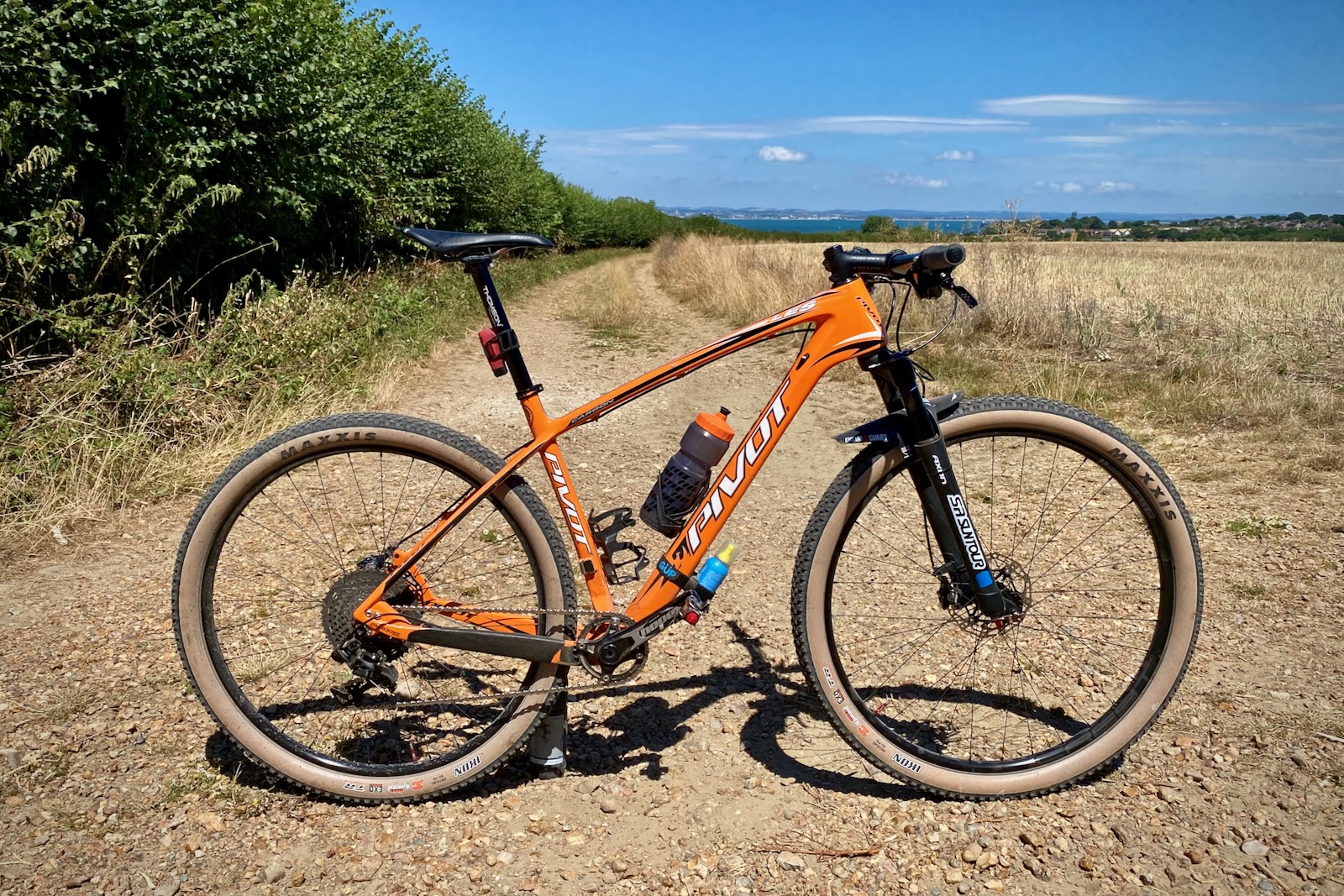How to 'Get Wide and Low' on Your 29er MTB XC Race Bike
I am a huge fan of 29ers. I remember when the big wheeled machines raised scepticism and doubtful abuse – "it's a tractor!"; but now they are accepted to be the faster, more comfortable and more efficient wheel choice for a cross country mountain bike.
The issue with the 29 inch wheel size, from an aerodynamic viewpoint, is that it raises the front end significantly—naturally positioning the rider in a more upright position than the 'racing tuck'.
Other than creating tiny tiny headtube lengths, the solution is to adjust the cockpit set-up to provide the most efficient racing position. This typically involves the introduction of flat handlebars and a negative drop stem angle.
The interesting side development in cross country bike cockpits over the last five years has been the growth in the popularity of wider handlebars. Wider bars offer greater leverage, better control and often improved comfort compared to the narrow bars previously found on cross country race bikes.
The combination of the negative drop stem and flat wide handlebars is what creates the 'Wide and Low' phenomenon.
To test the position myself, I fitted a Ritchey WCS Carbon Flat Bars (710 mm wide) and a Ritchey WCS C220 25D Stem (100 mm long – 25 degree negative drop) to both my mountain bikes.
The wider hand position provides greater control and improved steering responsiveness. The lower front end promotes a flatter back, which brings into play the powerful lower back muscles; those used in time-trials and road bike racing.
The small sweep of five degrees and the flat bar profile also provides a more comfortable hand position, for me; it reduces the wrist twist that has always been an area of weakness for my forearm tendons, and so reduces arm ache on long endurance rides.
Finally, it is worth saying that the superb quality carbon lay-up in the Ritchey WCS Carbon Flat Handlebars works wonders at reducing vibrations from the trail. I honestly think there is less hand fatigue than with the riser bars (normally more compliant) that they replaced.
I spend much of my riding time on a cyclocross/gravel bike, so the lower front end feels more natural. The wider stance handlebars were surprisingly easy to adapt to as well, and undoubtedly provide a more stable and controlling stance.
The move to a flat handlebar and short stiff stem could mean a less compliant and more bone-rattling ride. That has not been the case with the Ritchey WCS Carbon Flat Handlebars; I attribute this to the vibration dampening benefits of the carbon fibre.
Comfort leads to performance, and the 'Wide and Low' upgrade certainly provides both.
The issue with the 29 inch wheel size, from an aerodynamic viewpoint, is that it raises the front end significantly—naturally positioning the rider in a more upright position than the 'racing tuck'.
Other than creating tiny tiny headtube lengths, the solution is to adjust the cockpit set-up to provide the most efficient racing position. This typically involves the introduction of flat handlebars and a negative drop stem angle.
The interesting side development in cross country bike cockpits over the last five years has been the growth in the popularity of wider handlebars. Wider bars offer greater leverage, better control and often improved comfort compared to the narrow bars previously found on cross country race bikes.
The combination of the negative drop stem and flat wide handlebars is what creates the 'Wide and Low' phenomenon.
To test the position myself, I fitted a Ritchey WCS Carbon Flat Bars (710 mm wide) and a Ritchey WCS C220 25D Stem (100 mm long – 25 degree negative drop) to both my mountain bikes.
The Verdict
The change in position and feel compared to my previous 'narrow' (650 mm) bars and 6 degree drop stem is notable.The wider hand position provides greater control and improved steering responsiveness. The lower front end promotes a flatter back, which brings into play the powerful lower back muscles; those used in time-trials and road bike racing.
The small sweep of five degrees and the flat bar profile also provides a more comfortable hand position, for me; it reduces the wrist twist that has always been an area of weakness for my forearm tendons, and so reduces arm ache on long endurance rides.
Finally, it is worth saying that the superb quality carbon lay-up in the Ritchey WCS Carbon Flat Handlebars works wonders at reducing vibrations from the trail. I honestly think there is less hand fatigue than with the riser bars (normally more compliant) that they replaced.
Summary
For me, the 'Wide and Low' cockpit development is a significant upgrade—it positions you in a lower, more powerful, and indeed more comfortable position on a 29er.I spend much of my riding time on a cyclocross/gravel bike, so the lower front end feels more natural. The wider stance handlebars were surprisingly easy to adapt to as well, and undoubtedly provide a more stable and controlling stance.
The move to a flat handlebar and short stiff stem could mean a less compliant and more bone-rattling ride. That has not been the case with the Ritchey WCS Carbon Flat Handlebars; I attribute this to the vibration dampening benefits of the carbon fibre.
Comfort leads to performance, and the 'Wide and Low' upgrade certainly provides both.
.jpeg)
.jpeg)
.jpeg)
.jpeg)





Comments
Post a Comment